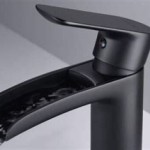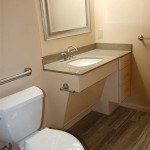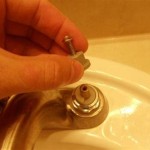What Is The Average Cost To Install a Bathroom Faucet?
Installing a new bathroom faucet can significantly enhance the aesthetic appeal and functionality of a bathroom. While some homeowners may choose to undertake this project as a DIY endeavor, many prefer to hire a professional plumber to ensure proper installation and avoid potential issues. Understanding the average cost to install a bathroom faucet involves considering various factors that contribute to the overall expense.
The cost to install a bathroom faucet typically ranges from $150 to $800, but this is a broad estimate. The final price is impacted by the type of faucet, the complexity of the installation, local labor rates, and any necessary repairs or modifications to existing plumbing. This article delves into the components that influence the cost of bathroom faucet installation, providing a comprehensive overview for homeowners planning this project.
Factors Influencing Bathroom Faucet Installation Costs
Several key factors contribute to the varying costs associated with bathroom faucet installation. These factors can be broadly categorized as the type of faucet, the difficulty of the installation process, and the geographic location of the homeowner.
Type of Faucet: The type of bathroom faucet selected plays a crucial role in determining the installation cost. Faucets come in a variety of styles, including single-hole, center-set, widespread, and wall-mounted. Each type presents different installation requirements and complexities.
Single-hole faucets, designed for sinks with only one pre-drilled hole, are generally the simplest and least expensive to install. Center-set faucets, which feature a spout and handles on a single base, are also relatively straightforward. Widespread faucets, with separate spout and handles, require more intricate plumbing connections, potentially increasing labor time and cost. Wall-mounted faucets, requiring plumbing within the wall, are the most complex and typically the most expensive to install, often necessitating modifications to the wall structure.
The material of the faucet can also influence the price. Faucets made of higher-end materials like brushed nickel, stainless steel, or brass generally cost more than chrome or plastic alternatives. While the material cost itself isn't directly part of the installation fee, a more expensive faucet may warrant extra care during installation, potentially leading to a slightly higher labor charge.
Complexity of Installation: The complexity of the installation process is another significant cost driver. A straightforward replacement of an existing faucet with a similar model will generally be less expensive than a new installation or a replacement that requires modifications to the sink, countertop, or plumbing.
Obstacles such as corroded pipes, difficult-to-reach connections, or the need to adjust the water supply lines can increase the time and effort required for the installation. Older homes often present unique challenges due to outdated plumbing systems, which may necessitate additional repairs or upgrades before the new faucet can be properly installed. If the shut-off valves are not functioning correctly, they may need to be replaced, further adding to the overall cost.
Similarly, if the existing sink or countertop is not compatible with the new faucet, modifications may be needed. This could involve drilling new holes, expanding existing ones, or even replacing the sink or countertop altogether. Such modifications can significantly increase the cost of the project.
Geographic Location: Labor rates for plumbing services vary considerably depending on the geographic location. Urban areas and regions with a higher cost of living typically have higher labor rates than rural areas. The demand for plumbers in a particular area can also impact pricing, with higher demand often translating to higher rates.
Homeowners should research local plumbing rates to get a more accurate estimate of the installation cost in their specific area. Obtaining multiple quotes from different plumbers is recommended to compare pricing and ensure a competitive rate. It's also important to consider the plumber's experience and reputation when making a decision, as a lower price may not always guarantee the best quality of work.
Breaking Down the Costs: Materials vs. Labor
The total cost of bathroom faucet installation can be broken down into two primary components: the cost of the faucet itself (materials) and the cost of labor for the installation. Understanding how these components contribute to the overall expense can help homeowners budget effectively for the project.
Faucet Cost (Materials): The price of the bathroom faucet can vary significantly depending on the brand, style, material, and features. Basic faucets can be found for as little as $50, while high-end models can cost several hundred dollars or more. The homeowner typically purchases the faucet, although some plumbers may offer to supply the faucet as part of their service.
When selecting a faucet, it's essential to consider not only the aesthetic appeal but also the quality and durability. Investing in a higher-quality faucet can often result in long-term savings by reducing the likelihood of leaks, repairs, and replacements. It's also important to ensure that the faucet is compatible with the existing sink and plumbing configuration.
In addition to the faucet itself, other materials may be required for the installation, such as plumber's putty, Teflon tape, new supply lines, and shut-off valves. These materials are generally inexpensive, but they can add to the overall cost. Some plumbers include the cost of these materials in their labor fee, while others charge separately.
Labor Cost: The labor cost for bathroom faucet installation typically ranges from $100 to $400, depending on the complexity of the installation, the plumber's hourly rate, and the geographic location. Plumbers typically charge an hourly rate or a flat fee for the installation. Hourly rates can vary from $50 to $150 or more, depending on the region and the plumber's experience.
A simple faucet replacement that involves disconnecting the old faucet and connecting the new one may take only one to two hours, resulting in a lower labor cost. However, more complex installations that require modifications to the plumbing or the sink can take several hours, increasing the labor cost. Plumbers may also charge extra for travel time, emergency services, or weekend/holiday work.
It's crucial to obtain a detailed quote from the plumber that outlines the scope of work, the hourly rate or flat fee, and any potential additional charges. This will help avoid unexpected costs and ensure transparency throughout the project. It's also advisable to ask the plumber about their experience with similar installations and their warranty policy.
DIY vs. Professional Installation: A Cost-Benefit Analysis
Homeowners often face the decision of whether to install a bathroom faucet themselves or hire a professional plumber. While DIY installation can save on labor costs, it's important to consider the potential risks and benefits of each approach.
DIY Installation: DIY faucet installation can be a cost-effective option for homeowners with basic plumbing skills and experience. The primary benefit is the elimination of labor costs, which can save several hundred dollars. DIY installation can also provide a sense of accomplishment and control over the project.
However, DIY installation also carries significant risks. Incorrect installation can lead to leaks, water damage, and other plumbing problems that can be costly to repair. It's essential to have a thorough understanding of plumbing principles and proper techniques before attempting a DIY installation. Homeowners should also be comfortable working with tools and handling plumbing connections.
Furthermore, DIY installation may void the warranty on the faucet or other plumbing components. Many manufacturers require professional installation for warranty coverage. It's also important to check local building codes and regulations, as some jurisdictions may require permits for plumbing work. If a homeowner is not confident in their plumbing skills or knowledge, it's best to leave the installation to a professional.
Professional Installation: Hiring a professional plumber ensures that the faucet is installed correctly and safely. Plumbers have the training, experience, and tools necessary to handle any unforeseen issues that may arise during the installation. They can also provide valuable advice and guidance on selecting the right faucet and maintaining the plumbing system.
While professional installation involves labor costs, it can ultimately save money in the long run by preventing costly repairs and ensuring the longevity of the faucet and plumbing system. Plumbers typically offer a warranty on their work, providing peace of mind in case of any problems. They are also familiar with local building codes and regulations and can ensure that the installation complies with all applicable requirements.
The decision to DIY or hire a professional depends on the homeowner's skills, experience, and comfort level. For simple faucet replacements, DIY installation may be a viable option. However, for more complex installations or when dealing with older or problematic plumbing systems, professional installation is highly recommended.
In conclusion, the average cost to install a bathroom faucet is influenced by several factors, including the type of faucet, the complexity of the installation, local labor rates, and the choice between DIY and professional installation. By understanding these factors and carefully considering their options, homeowners can make informed decisions and budget effectively for this common home improvement project.

Faucet Costs In Atlanta How Much Should You Expect To Spend Ranney Blair Weidmann

Cost To Install A Faucet The Home Depot

2025 Cost To Install Replace Faucet Kitchen Bathroom Bathtub

Bathroom Vanity Installation Cost 2024 Average S

How Much Does It Cost To Install A Faucet Instant Plumbing And Rooter

How Much Does It Cost To Install A Faucet Instant Plumbing And Rooter

How Much Does It Cost To Replace A Bathroom Faucet

How Much To Install A Sink Faucet Here S Do It For Less

How Much Does It Cost To Install A Sink 2025 Data

Bathtub Faucet Replacement Cost How Much To Replace A In 2024 Badeloft
Related Posts







